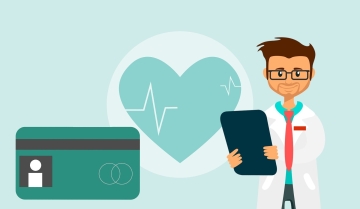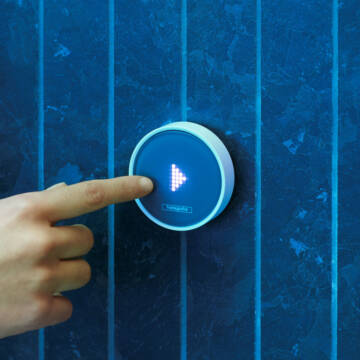The state of AI in Medical Diagnostics

Over the last years, accurate, automated image recognition and AI technology has advanced rapidly, showing promising results in medical diagnostics.
Over the last years, accurate, automated image recognition and AI technology has advanced rapidly, showing promising results in medical diagnostics.
The applications of Artificial Intelligence (AI) are growing rapidly. The technology also has the potential to revolutionize healthcare. Over the last years, accurate, automated image recognition and AI technology has advanced rapidly, showing promising results in medical diagnostics.
Loss of smell, or anosmia, is one of the earliest and most reported symptoms of COVID-19. This important diagnostic information did not come from doctors, or researchers. It came from artificial intelligence models that processed data from millions of people. It’s only one example of the huge potential of AI in medical diagnostics.
Let’s take a look at some medical diagnostics applications where AI can really make a difference.
AI medical applications
- Pattern recognition in medical images
AI technology can be used to recognize patterns on medical images, such as x-rays, CR-scans and MRI’s. The technology links the scanned patterns to certain diseases. That way AI can help doctors to diagnose specific diseases faster and more accurately. The technology is already used today to diagnose cancer based on photos of skin lesions. Additionally, it can also prove its value in diagnose cardiac arrhythmias and predicting stroke outcomes. - Improving the diagnosis and treatment process
When making a diagnosis, doctors must consider a multitude of symptoms, influences and side-effects. AI technology can help doctors to process large amounts of health data and patient information and connecting the right dots. It enables them to make the right diagnosis and prescribe the best treatment method. - Recognizing symptoms and effects of diseases
As described above, AI models have helped epidemiologists to understand the early symptoms of COVID-19. One of the major advantages of AI is that it can process excessive amounts of data, while recognizing certain patterns. That way it improves our understanding of new diseases, how they influence our body, how we can recognize the early symptoms and which treatment solutions will be the most effective.
Opportunities of AI in the healthcare sector
The applications above prove that AI can provide important benefits for the healthcare sector. And there is more.
- AI technology can speed up urgent medical assessments, such as cancer diagnosis. That way, treatment can start sooner, reducing the risk of further spreading of the cancer and saving lots of lives.
- AI technology makes it possible to execute accurate diagnosis in remote locations and developing countries, where there are few or no doctors with the right experience.
- The application of AI for the diagnosis of diseases also has a positive effect on the mental calm of doctors. When the results of AI algorithms confirm the diagnosis of the doctor, he will experience less stress about the accuracy of his diagnosis.
Assessing the state of AI Diagnostics
The two most decisive parameters of AI technology are accuracy and speed. If the AI software cannot produce a diagnosis faster and more accurate than an experienced radiologist, it has no value. In 2020, IDTechEx tested 35 different AI algorithms and concluded that most showed an accuracy and sensitivity comparable to human radiologists.
Ultimately, AI must be more accurate and more precise than the best trained and most experienced radiologist. Considering the ongoing developments in AI, the technology will become an indispensable tool to help doctors make fast and accurate diagnosis.
Latest insights & stories

A Global Movement: The World Unites in a Pink Pledge for Clean and Sustainable Water
5,000 participants. 32 countries. €30,000 funds raised. And that's just the beginning.
Picture this: One step that sends ripples across the globe, transforming lives and creating waves of change. You might wonder, how can such a simple action for most of us have such a profound impact?

RainTunes: Douchescenario's voor de ziel
Licht, geluid, geur en aanraking: samen met experts hebben we sensuele scenario's ontwikkeld die van douchen een persoonlijke ervaring maken. Of je je nu wilt voorbereiden op de komende dag of wilt ontspannen na een workout. Of je je wilt opfrissen na een dag werken of wilt ontspannen aan het eind van de avond: RainTunes verrast met multisensorische ervaringen.*
*Momenteel enkel in Duitsland en Oostenrijk verkrijgbaar.

De toekomst van werk: de vierdaagse, 32-uren werkweek omarmen met AFAS
Living Tomorrow, toegewijd aan het onderzoeken van de toekomst van werk, deelt haar inzichten over een baanbrekend initiatief van onze gewaardeerde partner, AFAS Software. Dit vooruitdenkende bedrijf heeft een gedurfde stap gezet om het traditionele werkparadigma te herdefiniëren door een vierdaagse werkweek van 32 uur te introduceren voor al zijn werknemers.